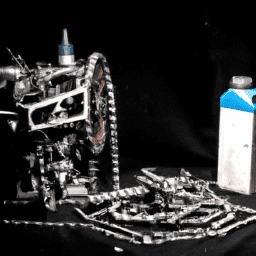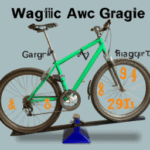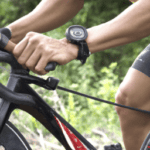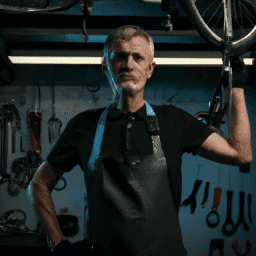If you’re similar to how I am, you’re constantly on the lookout for methods to enhance your biking abilities. No matter if you ride for fun or compete seriously, boosting your cycling speed and effectiveness can significantly change the game.
Fortunately, there are a number of strategies you can use to make your bicycle faster and more efficient. In this article, I’ll share some of the techniques I’ve used to shave precious seconds off my ride time.
One of the most important factors in making a bike faster is reducing its weight. The more weight you’re carrying, the more energy you’ll need to expend to propel yourself forward. By stripping your bike down to its essentials and eliminating any unnecessary accessories or components, you can make a significant difference in your speed and performance.
But weight reduction is just one piece of the puzzle. In order to truly maximize your potential on the bike, you’ll need to consider a range of other factors, from aerodynamics to gearing to training techniques. So let’s dive in and explore some of the key strategies for making your bicycle faster and more efficient.
Key Takeaways
- Reducing bike weight through upgrades and removing unnecessary accessories can improve speed and efficiency.
- Proper maintenance and lubrication can also enhance bike efficiency and performance.
- Improving aerodynamics through posture adjustments, accessories, and gear upgrades can increase speed.
- Incorporating interval training into a structured training plan can help build endurance and improve overall performance on the bike.
Reduce the Weight of Your Bike
Want to make your bike faster? Try shedding some weight by reducing the overall weight of your ride!
One way to do this is by upgrading to carbon fiber components, such as handlebars, seat posts, and wheels. Carbon fiber is a lightweight and incredibly strong material that can significantly reduce the weight of your bike without sacrificing strength or durability. By making this switch, you can shed some pounds off your bike and make it faster and more agile.
Another way to reduce weight is by ensuring that your bike is at the correct tire pressure. Overinflated or underinflated tires can add unnecessary weight to your bike and slow your ride down. Check your tire pressure regularly and make sure it is within the recommended range for your specific bike and riding style.
Additionally, consider other weight reduction ideas such as removing any unnecessary accessories or opting for a smaller frame size if possible. By reducing the weight of your bike, you can increase your speed and performance on the road.
Properly maintaining and lubricating your bike can also play a crucial role in making it faster.
Properly Maintain and Lubricate Your Bike
To keep your ride smooth and efficient, you’ll need to regularly maintain and lubricate the various components of your two-wheeled machine. Here are some important tips to follow when maintaining and lubricating your bike:
-
Choosing lubricants: Not all lubricants are created equal. Be sure to choose the right type of lubricant for each specific component of your bike. For example, use a wet lubricant on your chain and a dry lubricant on your derailleur. This will help ensure that each component is properly lubricated and functioning at its best.
-
Cleaning techniques: Before you lubricate your bike, it’s important to clean it thoroughly. Use a mild soap and water to clean the frame and components, and a degreaser to clean the chain. Be careful not to use too much water, as this can damage your bike’s components. Once your bike is clean, apply lubricant to the chain, derailleur, and other moving parts.
-
Frequency of maintenance and professional servicing: It’s important to maintain your bike regularly to keep it running smoothly. This includes cleaning and lubricating the components, as well as checking for wear and tear. Depending on how often you ride your bike, you may need to perform maintenance once a month or once a season. Additionally, it’s a good idea to have your bike professionally serviced once a year to ensure that it’s in top condition.
By properly maintaining and lubricating your bike, you’ll not only improve its performance but also increase its lifespan. Now that you know how to keep your bike running smoothly, let’s move on to the next step: improving your aerodynamics.
Improve Your Aerodynamics
Maximize your speed and efficiency on your bike by reducing wind resistance with these simple aerodynamic tips. One of the easiest ways to improve your aerodynamics is by adjusting your posture on your bike. Make sure your elbows are tucked in and your shoulders are relaxed. This will help you cut through the wind more efficiently and decrease drag.
Additionally, try to keep your head down and your back flat. This will help you maintain a streamlined shape and reduce wind resistance. Another way to improve your aerodynamics is by using aerodynamic accessories. A set of deep-section wheels can help you slice through the wind, while aero bars can help you maintain a more aerodynamic position.
You can even invest in a skin suit or aero helmet to further reduce drag. Just keep in mind that these accessories can be expensive, so weigh the benefits against the cost before making a purchase. By incorporating these simple aerodynamic tips, you’ll be able to increase your speed and efficiency on your bike.
Now, let’s talk about how to upgrade your gearing for even better performance.
Upgrade Your Gearing
I want to talk about upgrading your gearing to improve your bicycle’s performance. Choosing the right gear ratio is crucial to optimizing your pedaling efficiency and speed. By matching your gear to your terrain and fitness level, you can ride faster with less energy expenditure.
Additionally, installing a power meter can help you track your progress and make informed decisions about your training and gear choices.
Choose the Right Gear Ratio
Opting for the appropriate gear ratio can have a significant impact on your bicycle’s speed. The right gear ratio allows you to optimize your pedaling technique and cadence, resulting in increased speed and efficiency. Here are five factors to consider when choosing the right gear ratio:
-
Terrain: The type of terrain you’ll be riding on affects the gear ratio you should choose. For hilly terrain, a lower gear ratio will help you climb more easily. For flat terrain, a higher gear ratio will allow you to pedal at a faster cadence.
-
Fitness level: Your fitness level also plays a role in determining the gear ratio that’s right for you. If you’re a beginner or have lower fitness, a lower gear ratio will be more appropriate. If you’re more advanced or have higher fitness, a higher gear ratio may be better suited for you.
-
Bike type: The type of bike you have can also impact the gear ratio you should choose. For example, a road bike typically has a higher gear ratio than a mountain bike.
-
Riding style: Your preferred riding style can also influence the gear ratio you should choose. If you prefer to ride at a higher cadence, a lower gear ratio may be better for you. If you prefer to ride at a slower cadence, a higher gear ratio may be more appropriate.
-
Weather conditions: Finally, consider the weather conditions you’ll be riding in. Wind and rain can impact your speed and the gear ratio you should choose. For example, if you’re riding into a headwind, a lower gear ratio may be more beneficial.
Considering all of these factors will help you choose the right gear ratio for your bicycle and optimize your speed and efficiency. If you want to take your speed to the next level, consider installing a power meter to track your performance and make further improvements.
Consider Installing a Power Meter
Congratulations, you’ve made it to the current subtopic where we suggest considering the installation of a power meter to take your cycling performance to the next level. Power meters are devices that measure the power output of a cyclist and can provide valuable insight into one’s performance.
By measuring the amount of force applied to the pedals and the speed at which they are turning, power meters can accurately calculate the power output of a cyclist in watts. The benefits of power meters are numerous. They allow cyclists to track their progress and identify areas for improvement.
With a power meter, you can easily monitor your power output during a ride and adjust your effort accordingly to avoid overexertion or underperformance. When choosing the right power meter model, consider features such as accuracy, compatibility with your bike and cycling computer, and ease of use.
Investing in a quality power meter can be a game-changer for serious cyclists looking to improve their performance. To train smart and get the most out of your power meter, it’s important to have a structured training plan that incorporates intervals, recovery, and rest.
By analyzing your power data and identifying your strengths and weaknesses, you can tailor your training to target specific areas and make the most of your time on the bike. With the right tools and training, you can take your cycling performance to the next level and achieve your goals.
Train Smart
To make your bicycle faster, you can train smart by incorporating interval training into your routine. Effective workouts that include intervals can help you build endurance, increase your speed, and improve your overall performance on the bike.
Interval training involves alternating between periods of high intensity effort and periods of rest or lower intensity riding. To get started with interval training, it’s important to set specific goals and plan out your workouts in advance. This can help ensure that you are challenging yourself appropriately and making progress over time.
You can also incorporate different types of intervals into your training, such as short, intense efforts or longer, sustained efforts. By training smart and incorporating interval training into your routine, you can take your cycling to the next level and achieve faster, more efficient rides.
Frequently Asked Questions
What is the best type of tire to use for a faster bicycle?
Tubeless tires are the fastest option, hands down. But tire width also plays a role in speed, with narrower tires offering less rolling resistance. Clinchers are a close second, but tubeless is the way to go for ultimate speed.
Are there any specific exercises or training programs that can improve cycling speed?
Interval training and strength training are effective methods for improving cycling speed. Interval training involves high-intensity intervals followed by periods of rest. Strength training focuses on building leg muscle strength. Both methods can enhance overall cycling performance.
How can adjusting the height and angle of the handlebars affect speed?
I tested the theory that optimizing handlebar position can affect speed. Adjusting the height and angle of the handlebars can improve aerodynamic body posture, reducing air resistance and increasing speed. Technical precision is key.
Is it worth investing in a carbon fiber frame to make a bike faster?
Investing in a carbon fiber frame can make a bike faster due to its light weight and stiffness. However, carbon fiber alternatives can be less expensive. Aerodynamic upgrades such as aero bars can also improve speed.
Can adding accessories like a water bottle holder or bike lock affect speed?
Adding accessories like a water bottle holder or bike lock can increase weight and negatively impact speed. However, aerodynamics are also crucial for speed. Wind resistance from accessories can slow you down, so choose lightweight, aerodynamic options when possible.
Conclusion
In conclusion, making a bicycle faster requires a combination of factors.
Reducing the weight of your bike can make a significant difference, but proper maintenance and lubrication are also crucial.
Improving your aerodynamics by adjusting your riding position or investing in aerodynamic equipment can also increase your speed.
Upgrading your gearing can help you find the perfect balance between power and speed.
However, the most important factor in making a bicycle faster is training smart. Developing your strength and endurance through consistent training will ultimately lead to faster riding speeds.
Overall, the key to making a bicycle faster is to focus on all these factors in combination.
By reducing the weight of your bike, properly maintaining it, improving your aerodynamics, upgrading your gearing, and training smart, you can achieve faster speeds and become a more efficient rider.
Don’t underestimate the power of these small changes – they can make a big impact on your overall performance.
So, put in the work and see the results for yourself. Happy riding!
















